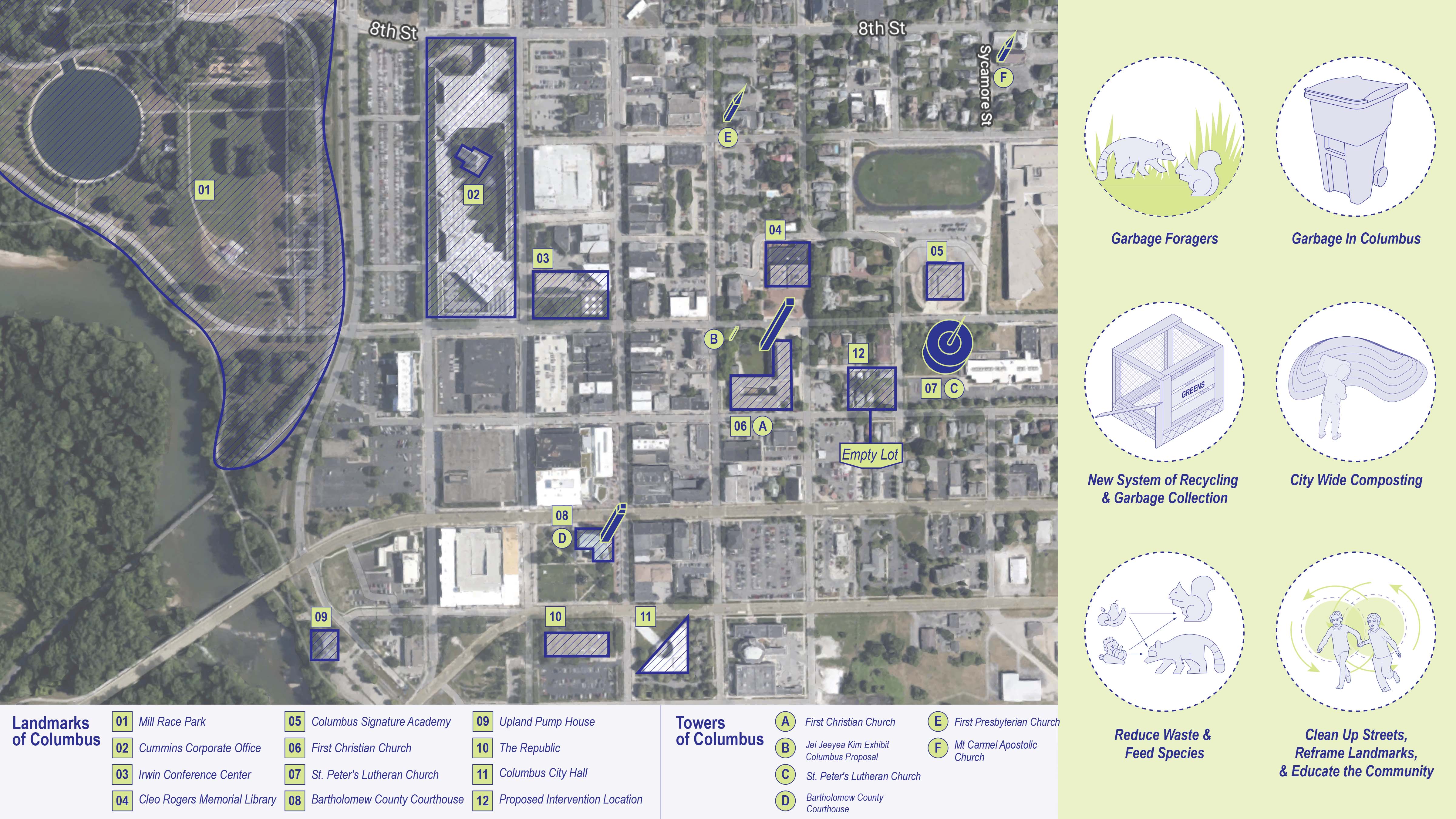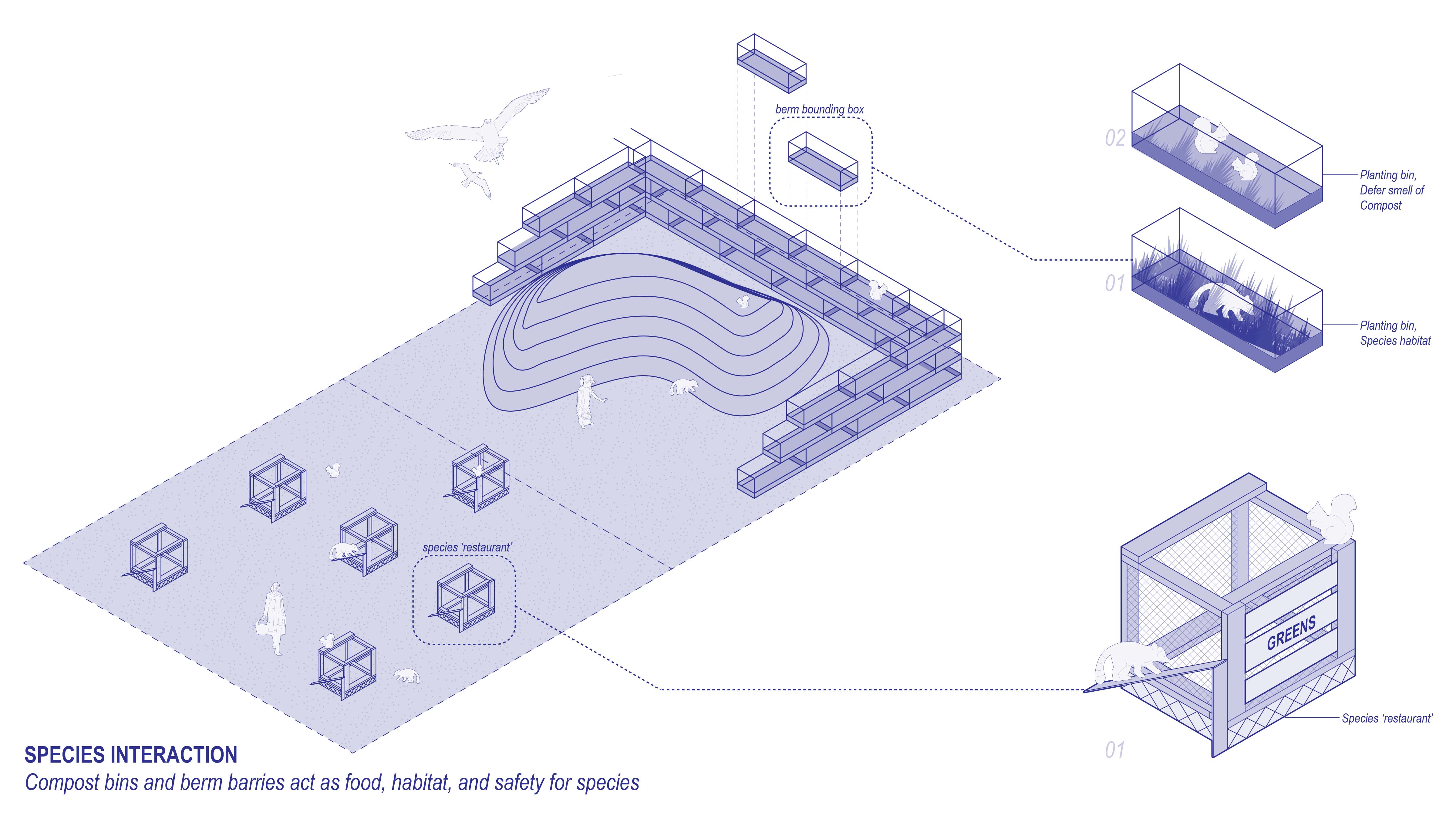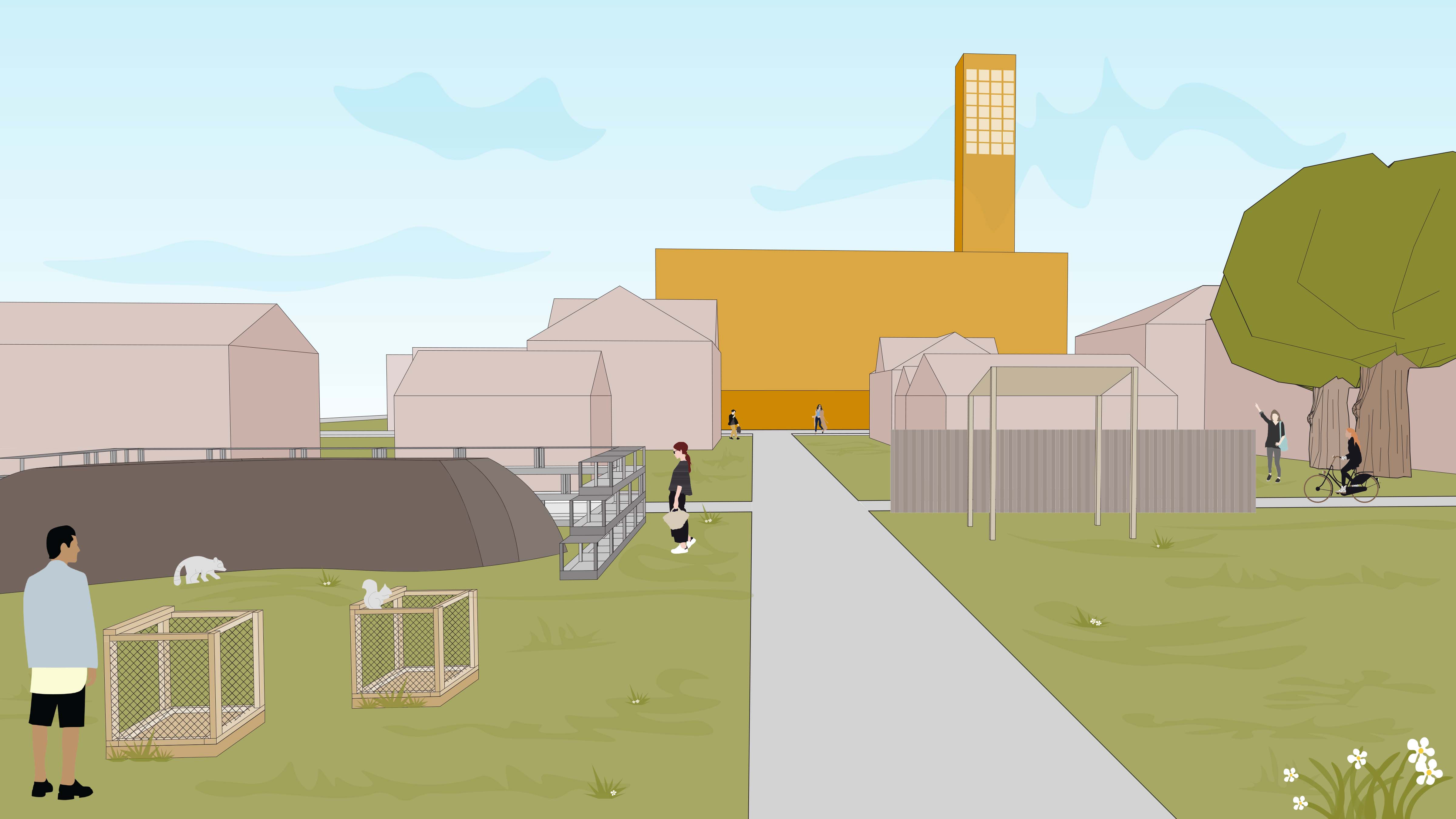


Birds of Indiana, Backyard Birds, Ivy, AT&T Switching Center, CRS, Paul Kennon, Historic Preservation, Columbus Indiana, High Tech Modernism, Vertical Habitat
Aves & Ivies
by Cristian Copete
B.S. Arch ‘20, M.Arch ‘21 University at Buffalo
The metamorphosis of Indiana’s ancient hardwood forests into bustling towns and cities has reorganized an ecosystem that has otherwise been undisturbed since the end of the last ice age. Within the concrete jungle, the wild birds of history’s past persist; only now as the “backyard birds” of Indiana. Aves and Ivies picks up on where American architect Paul Kennon left off, by advancing the concept of one of his most iconic works, the high-tech modern Indiana Bell Switching Center, to negotiate a healthy ecological synergy between the once wild birds of Indiana and the tame yet harsh urban condition.
by Cristian Copete
B.S. Arch ‘20, M.Arch ‘21 University at Buffalo
The metamorphosis of Indiana’s ancient hardwood forests into bustling towns and cities has reorganized an ecosystem that has otherwise been undisturbed since the end of the last ice age. Within the concrete jungle, the wild birds of history’s past persist; only now as the “backyard birds” of Indiana. Aves and Ivies picks up on where American architect Paul Kennon left off, by advancing the concept of one of his most iconic works, the high-tech modern Indiana Bell Switching Center, to negotiate a healthy ecological synergy between the once wild birds of Indiana and the tame yet harsh urban condition.



Bee Bricks for Solitary Bees
by Mitchel Mesi
B.S. Arch ‘19, M.Arch ‘21 University at Buffalo
Why are bees important? It could be because some produce honey, or pollinate flowers and crops, or even something else entirely. Different bee species have different functions. Solitary bees, specifically Mason bees, are the most vital pollinators to our flowers and our food. These bees do not live in hives with others, and in an ever-developing urban fabric, they need homes.
We know that bees of all sorts are threatened in today’s society. Solitary bees need to be preserved as they are integral to pollination. In an effort to provide homes and spaces for solitary bees to nest, these Bee Bricks offer a unique take on a path to save the bees. Similar to other types of bee hotels and insect homes, Bee Bricks are made out of the same materials as typical bricks, and can replace or be installed anywhere the average brick would exist. These bricks share the formal typologies of the Cleo Rogers Memorial Library, but their design can expand beyond the influence of this local site.
This intervention provides spaces for humans and bees to safely interact with one another. The docile creatures and their habitats can be viewed and interacted with up close, and can help to change the way people view these creatures into something that recognizes them for what they truly are - harmless and beneficial to society.
by Mitchel Mesi
B.S. Arch ‘19, M.Arch ‘21 University at Buffalo
Why are bees important? It could be because some produce honey, or pollinate flowers and crops, or even something else entirely. Different bee species have different functions. Solitary bees, specifically Mason bees, are the most vital pollinators to our flowers and our food. These bees do not live in hives with others, and in an ever-developing urban fabric, they need homes.
We know that bees of all sorts are threatened in today’s society. Solitary bees need to be preserved as they are integral to pollination. In an effort to provide homes and spaces for solitary bees to nest, these Bee Bricks offer a unique take on a path to save the bees. Similar to other types of bee hotels and insect homes, Bee Bricks are made out of the same materials as typical bricks, and can replace or be installed anywhere the average brick would exist. These bricks share the formal typologies of the Cleo Rogers Memorial Library, but their design can expand beyond the influence of this local site.
This intervention provides spaces for humans and bees to safely interact with one another. The docile creatures and their habitats can be viewed and interacted with up close, and can help to change the way people view these creatures into something that recognizes them for what they truly are - harmless and beneficial to society.



North Christian Church, Bats, Pollinators, Insects, Sanctuary, Grid, Landscape, Trees, Gathering, Eero Saarinen, Dan Kiley
Bat Sanctuary
by Gabrielle Morales
B.S.Arch ‘21, M.Arch ‘22 University at Buffalo
What if we designed spaces for a species the way we design them for ourselves? Bat Sanctuary is a proposal that challenges our perceptions of a species commonly portrayed in a negative light. Bats are crucial to environmental health and deserve the same amount of consideration we would give ourselves.
Columbus, Indiana is the home to many significant architectural works including North Christian Church by Eero Saarinen. Everything about this building as well as the landscape its sited on designed by Dan Kiley puts the focus on shaping human experience. What if we were to take North Christian Church designed as a sanctuary for humans and mirror those concepts to create a sanctuary for bats? This project works to combine geometries from the existing landscape and ideal conditions for bat habitats to do just that.
by Gabrielle Morales
B.S.Arch ‘21, M.Arch ‘22 University at Buffalo
What if we designed spaces for a species the way we design them for ourselves? Bat Sanctuary is a proposal that challenges our perceptions of a species commonly portrayed in a negative light. Bats are crucial to environmental health and deserve the same amount of consideration we would give ourselves.
Columbus, Indiana is the home to many significant architectural works including North Christian Church by Eero Saarinen. Everything about this building as well as the landscape its sited on designed by Dan Kiley puts the focus on shaping human experience. What if we were to take North Christian Church designed as a sanctuary for humans and mirror those concepts to create a sanctuary for bats? This project works to combine geometries from the existing landscape and ideal conditions for bat habitats to do just that.



Mycelium, Soil, Sustainability, Pollinators, Columbus Indiana, Climate Change, Microbes, Fungi, Carbon Sequestration
Soil Resurgence
by Ben Wemesfelder
B.S. Arch ‘21, M.Arch ‘22 University at Buffalo
Soil Resurgence builds on the growing realization that in order to allow nature to thrive we must introduced it with forethought and care. It is crucial to pay close attention to soil conditions, microbial health and nutrients as they can inform and influence our design decisions, creating nurturing spaces for plant life and ourselves alike.
The project looks to act as a proof of concept; proving how a less human centric and more nature optimizing approach could be taken to landscape and city design resulting in urban soils being adequately supplied with the resources and conditions required to maintain sustainable plant growth.
by Ben Wemesfelder
B.S. Arch ‘21, M.Arch ‘22 University at Buffalo
Soil Resurgence builds on the growing realization that in order to allow nature to thrive we must introduced it with forethought and care. It is crucial to pay close attention to soil conditions, microbial health and nutrients as they can inform and influence our design decisions, creating nurturing spaces for plant life and ourselves alike.
The project looks to act as a proof of concept; proving how a less human centric and more nature optimizing approach could be taken to landscape and city design resulting in urban soils being adequately supplied with the resources and conditions required to maintain sustainable plant growth.



First Christian Church, Saint Peter’s Lutheran Church, City of Towers, Squirrels, Raccoons, Garbage, Composting
Composting with Foragers
by Marietta Koeberle
B.S. Arch ‘21, M.Arch ‘22 University at Buffalo
As a way to feed species that we co-habitate with, clean up streets, reframe landmarks, and bring a new consciousness to waste in society; a community composting iniative is being proposed. Residents of Columbus, Indiana can bring their compostable materials to a lot near the First Christian Church. Species can sift through the compostable materials and find meals. The excess materials are sorted and decompose into compost which the residents can use at home.
This intervention is a way for people to become more conscious of what they throw away and how that can impact species as well as the environment. This new system of composting could change the way landmarks are viewed and could clean up areas where garbage is stored in cities.
by Marietta Koeberle
B.S. Arch ‘21, M.Arch ‘22 University at Buffalo
As a way to feed species that we co-habitate with, clean up streets, reframe landmarks, and bring a new consciousness to waste in society; a community composting iniative is being proposed. Residents of Columbus, Indiana can bring their compostable materials to a lot near the First Christian Church. Species can sift through the compostable materials and find meals. The excess materials are sorted and decompose into compost which the residents can use at home.
This intervention is a way for people to become more conscious of what they throw away and how that can impact species as well as the environment. This new system of composting could change the way landmarks are viewed and could clean up areas where garbage is stored in cities.
